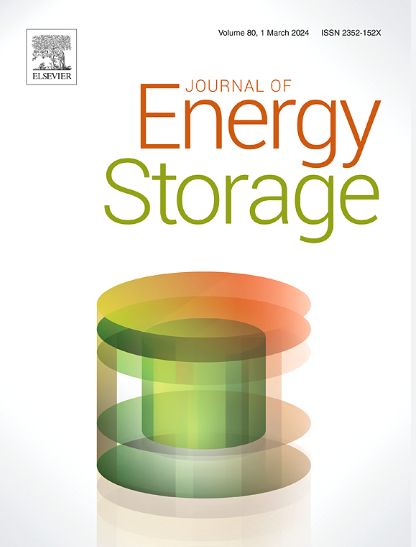Nanocarbon materials for lithium-ion battery anodes: Review
IF 8.9
2区 工程技术
Q1 ENERGY & FUELS
引用次数: 0
Abstract
Carbon allotropes are widely used as anodes and conductive additives for lithium-ion batteries (LIBs) owing to their large surface area, high electrical conductivity, and stability. By far, as only graphite has been commercialized, with limited capacity and stability, it is important to explore other carbon allotropes as anodes. Our review provides a comprehensive study of theoretical insights and electrochemical comparison of various carbon allotropes, mostly as anodes in LIBs. The theoretical insights mainly express the interaction of Li-ions with each carbon allotrope and guide about Li-ion diffusivity and adsorption that varies with geometry, edges, doping, vacancies, etc. Electrochemical battery performance discusses the structural limits of each carbon structure and emphasizes adopting methods such as doping, hybridization, and derivatization to improve LIB anode performance. To the above framework of theoretical and electrochemical investigation of carbon allotropes, a third layer of recyclability is purposely included to offer sustainable approaches in selecting the most appropriate carbon allotrope as anode for LIBs. The recycling process of each carbon with the most relevant purification method is highlighted, encouraging the use of greener and more sustainable approaches. In the landscape of carbon-based anode materials, this review directs through theoretical, experimental, and sustainable aspects to optimize carbon allotropes as potential LIB anodes.
锂离子电池负极纳米碳材料研究进展
碳同素异形体具有表面积大、导电性好、稳定性好等优点,被广泛用作锂离子电池的阳极和导电添加剂。到目前为止,由于只有石墨已经商业化,容量和稳定性有限,探索其他碳同素异形体作为阳极是很重要的。我们的综述提供了各种碳同素异形体的理论见解和电化学比较,主要是作为锂离子电池的阳极。理论见解主要表达了锂离子与各碳同素异形体的相互作用,并指导了锂离子的扩散率和吸附随几何形状、边缘、掺杂、空位等的变化。电化学电池性能讨论了每种碳结构的结构限制,强调采用掺杂、杂化、衍生化等方法来提高锂电池阳极性能。在上述碳同素异形体的理论和电化学研究框架中,有意将第三层可回收性纳入其中,为选择最合适的碳同素异形体作为锂离子电池阳极提供可持续的方法。每个碳与最相关的净化方法的回收过程被强调,鼓励使用更环保和更可持续的方法。在碳基阳极材料领域,本文将从理论、实验和可持续发展的角度来优化碳同素异体作为潜在的锂离子电池阳极。
本文章由计算机程序翻译,如有差异,请以英文原文为准。
求助全文
约1分钟内获得全文
求助全文
来源期刊

Journal of energy storage
Energy-Renewable Energy, Sustainability and the Environment
CiteScore
11.80
自引率
24.50%
发文量
2262
审稿时长
69 days
期刊介绍:
Journal of energy storage focusses on all aspects of energy storage, in particular systems integration, electric grid integration, modelling and analysis, novel energy storage technologies, sizing and management strategies, business models for operation of storage systems and energy storage developments worldwide.
 求助内容:
求助内容: 应助结果提醒方式:
应助结果提醒方式:


